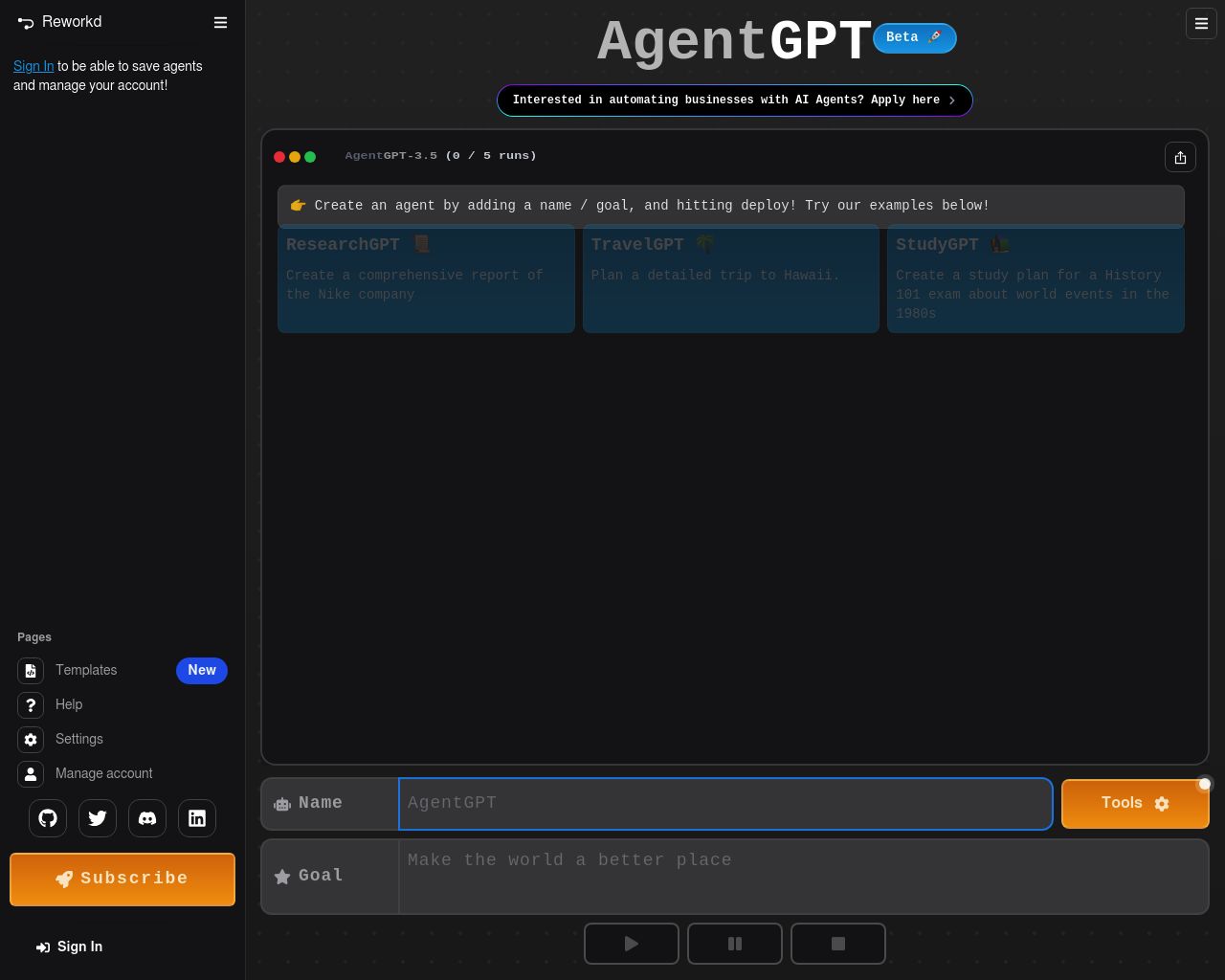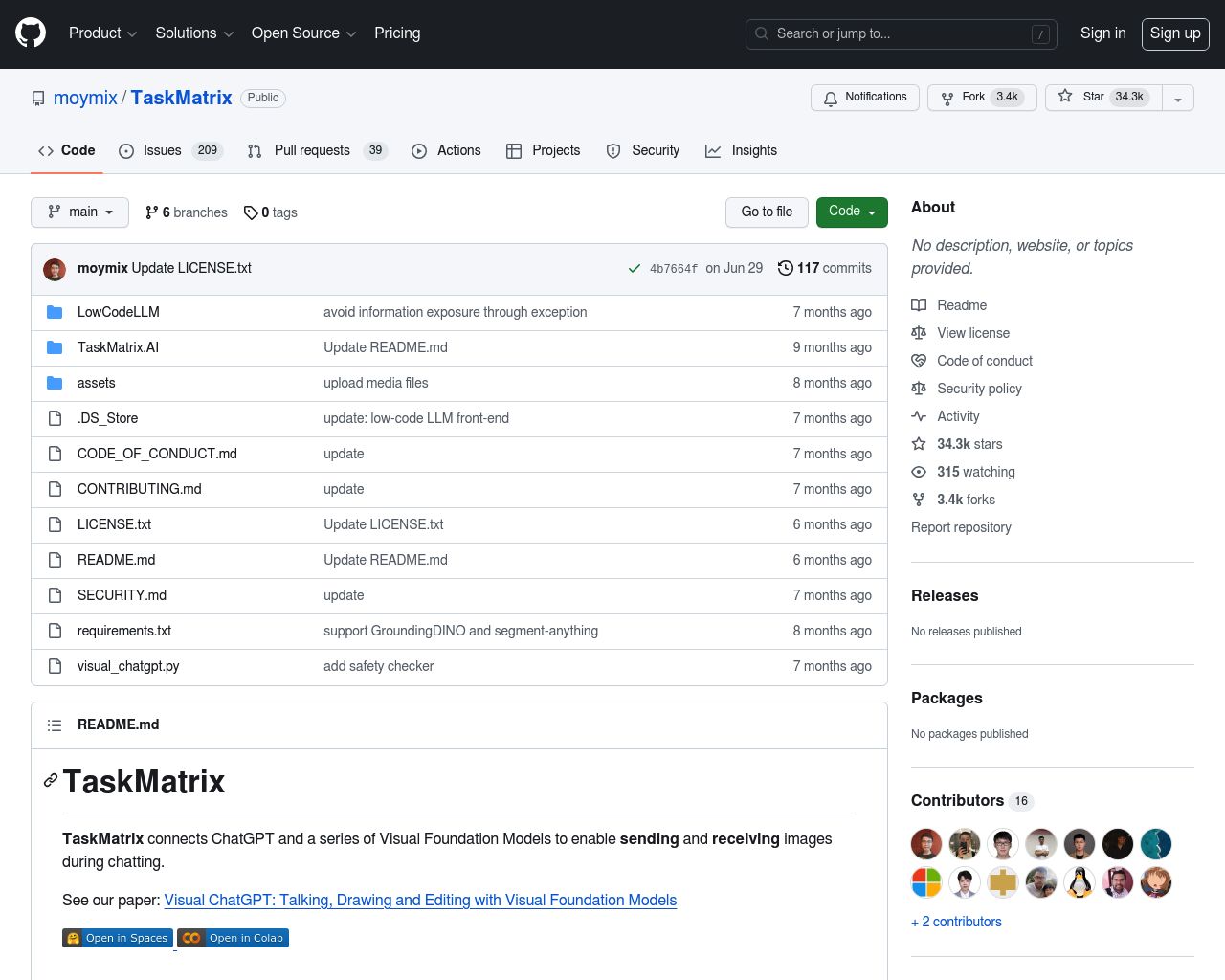AgentGPT vs TaskMatrix – A Comprehensive Comparison
AI agent development platforms revolutionize how businesses harness artificial intelligence. AgentGPT and TaskMatrix, two leading contenders in this space, offer unique approaches to creating autonomous AI agents. AgentGPT provides an accessible platform with features like user authentication and multi-language support, while TaskMatrix focuses on integrating foundation models with specialized APIs for diverse task execution. This comparison explores their key features, strengths, and limitations, alongside SmythOS, a comprehensive solution that addresses gaps in both platforms. We’ll examine how each tool empowers developers, business leaders, and AI enthusiasts to build powerful AI agents, considering factors such as ease of use, security, and scalability. By the end, you’ll have a clear understanding of which platform best suits your AI development needs.
AgentGPT Overview
AgentGPT empowers developers to build and deploy autonomous AI agents through an open-source platform. Users can create goal-oriented agents that tackle complex tasks, differentiating AgentGPT from conversational AI like ChatGPT.


The platform offers user authentication, agent run saving and sharing, multi-language support, and AI model customization. Web browsing capabilities and Stripe integration for paid versions enhance its versatility. AgentGPT’s use of vector databases for memory management allows agents to retain execution history, improving long-term functionality.
AgentGPT empowers developers to build and deploy autonomous AI agents through an open-source platform. Users can create goal-oriented agents that tackle complex tasks, differentiating AgentGPT from conversational AI like ChatGPT.
Developers can access AgentGPT via docker-compose without an API key for local runs. The cloud offering scales efficiently, integrating with tools like LangChain. This accessibility makes AgentGPT suitable for a range of applications, from simple tasks to complex operations.
While AgentGPT provides a robust foundation for AI agent development, it lacks some advanced features. The platform doesn’t offer a visual builder or no-code editor, potentially limiting accessibility for non-technical users. Additionally, there’s no explicit support for multi-agent collaboration or human-AI interaction features, which may restrict its applicability in certain scenarios.
AgentGPT’s vision centers on democratizing AI technology, making advanced tools accessible to a broader audience. The platform evolves through community contributions, fostering a collaborative development approach. However, users should consider their specific needs and technical expertise when evaluating AgentGPT against other AI agent builders in the market.
TaskMatrix Overview
TaskMatrix empowers developers to create and manage AI agents for diverse applications. This open-source platform enables the construction of autonomous AI agents capable of executing complex tasks and learning from outcomes.
TaskMatrix’s core strength lies in its integration of powerful foundation models with specialized APIs. This combination allows agents to understand user instructions, generate executable action codes, and perform a wide range of digital and physical tasks. The platform’s architecture includes a comprehensive API repository, an intelligent API selector, and an action executor, facilitating seamless task completion across various domains.
TaskMatrix’s core strength lies in its integration of powerful foundation models with specialized APIs. This combination allows agents to understand user instructions… and perform a wide range of digital and physical tasks.


Key features of TaskMatrix include its conversational foundation model, which processes multimodal inputs, and its extensive API platform. The system excels in problem-solving capabilities, allowing agents to conduct research, analysis, and other complex activities. TaskMatrix also incorporates vector databases for efficient memory management, enabling agents to store and utilize task execution history effectively.
While TaskMatrix offers robust capabilities for AI agent development, it lacks some features found in more comprehensive platforms. The absence of a visual builder or no-code editor may limit accessibility for non-technical users. Additionally, the platform does not explicitly mention features for multi-agent collaboration, human-AI interaction, or advanced debugging tools.
TaskMatrix’s scalability and use of Docker for environment setup suggest its suitability for handling large-scale deployments. The platform supports OAuth authentication, enhancing security for integrations with services like Google, GitHub, and Discord. However, information about data encryption, IP control, and other advanced security features is not readily available.
For developers and organizations seeking a powerful, open-source solution for building AI agents with strong API integration capabilities, TaskMatrix presents a compelling option. Its focus on connecting foundation models with specialized APIs opens up possibilities for creating versatile AI solutions across various industries and use cases.
Feature Comparison
AgentGPT and TaskMatrix offer distinct approaches to AI agent development, each with its own strengths and limitations. AgentGPT excels in providing an accessible platform for creating autonomous AI agents, featuring user authentication, agent run saving, and multi-language support. Its use of vector databases for memory management enhances agent functionality over time. TaskMatrix, developed by Microsoft, focuses on integrating powerful foundation models with specialized APIs, enabling agents to perform a wide range of digital and physical tasks.
While both platforms support autonomous agent creation, they differ significantly in their core components. AgentGPT lacks a visual builder or no-code editor, potentially limiting accessibility for non-technical users. TaskMatrix, on the other hand, doesn’t explicitly mention these features either, focusing instead on its API integration capabilities. This leaves both platforms at a disadvantage compared to SmythOS, which offers a robust drag-and-drop interface for intuitive agent building.
In terms of security, neither AgentGPT nor TaskMatrix provides comprehensive information about data encryption or IP control features. SmythOS addresses these concerns directly, offering advanced security measures including data encryption and OAuth integration. This focus on security gives SmythOS a clear edge for users prioritizing data protection and access control in their AI agent deployments.
Feature Comparison Table
| AgentGPT | TaskMatrix | SmythOS | |
|---|---|---|---|
| CORE FEATURES | |||
| Visual Builder | ❌ | ✅ | ✅ |
| No-Code Options | ❌ | ✅ | ✅ |
| Explainability & Transparency | ❌ | ✅ | ✅ |
| Human-AI Interaction | ❌ | ✅ | ✅ |
| SECURITY | |||
| Constrained Alignment | ❌ | ✅ | ✅ |
| IP Control | ❌ | ✅ | ✅ |
| COMPONENTS | |||
| Foundation AIs | ❌ | ✅ | ✅ |
| Data Lakes | ❌ | ❌ | ✅ |
| DEPLOYMENT OPTIONS (EMBODIMENTS) | |||
| Staging Domains | ❌ | ✅ | ✅ |
| Production Domains | ❌ | ✅ | ✅ |
| Deploy as Scheduled Agent | ❌ | ✅ | ✅ |
| DATA LAKE SUPPORT | |||
| Hosted Vector Database | ✅ | ❌ | ✅ |
| Sitemap Crawler | ❌ | ❌ | ✅ |
| YouTube Transcript Crawler | ❌ | ❌ | ✅ |
Best Alternative to AgentGPT and TaskMatrix
SmythOS stands out as the superior alternative to AgentGPT and TaskMatrix for AI agent development and deployment. Our platform offers a comprehensive solution that addresses the limitations of both competitors while providing unmatched ease of use, feature richness, and versatility.
Unlike AgentGPT and TaskMatrix, SmythOS provides a powerful visual builder with drag-and-drop functionality, making agent creation accessible to users of all skill levels. This intuitive interface, combined with our no-code options, dramatically reduces the time and expertise required to develop sophisticated AI agents.
SmythOS provides a powerful visual builder with drag-and-drop functionality, making agent creation accessible to users of all skill levels.
SmythOS excels in security and scalability, offering robust data encryption, OAuth integration, and IP control features that surpass both AgentGPT and TaskMatrix. Our platform ensures your AI deployments remain secure and compliant, a critical consideration for businesses handling sensitive data.
We offer unparalleled flexibility in deployment options, allowing you to run your agents as APIs, webhooks, scheduled tasks, or integrate them into popular platforms like ChatGPT. This versatility, coupled with our support for multiple AI models and extensive API integrations, enables SmythOS to tackle an unlimited range of use cases that AgentGPT and TaskMatrix simply cannot match.
SmythOS excels in security and scalability, offering robust data encryption, OAuth integration, and IP control features that surpass both AgentGPT and TaskMatrix.
By choosing SmythOS, you’re not just selecting a tool — you’re embracing a complete ecosystem for AI agent development that empowers you to innovate faster, operate more efficiently, and stay ahead in the rapidly evolving world of AI technology.
Conclusion
AgentGPT and TaskMatrix offer unique approaches to AI agent development, each with distinct strengths. AgentGPT provides an accessible platform for creating autonomous agents with features like user authentication and multi-language support. TaskMatrix excels in integrating foundation models with specialized APIs, enabling diverse task execution. However, both platforms lack some advanced features found in more comprehensive solutions.
SmythOS stands out as the superior choice, offering a robust drag-and-drop interface that simplifies agent creation for users of all technical levels. Our platform’s extensive integration ecosystem, supporting over 300,000 integrations, surpasses the capabilities of both AgentGPT and TaskMatrix. SmythOS also prioritizes security with advanced features like data encryption and OAuth integration, addressing concerns that are less clear in the other platforms.
For those seeking a powerful, versatile, and user-friendly AI agent development platform, SmythOS is the clear winner. We invite you to explore our diverse range of AI-powered agent templates and experience the future of AI automation. Get started with SmythOS today and unlock the full potential of AI for your business – with our risk-free trial, you can create unlimited AI agents at no cost and see the SmythOS difference for yourself.
Last updated:
Disclaimer: The information presented in this article is for general informational purposes only and is provided as is. While we strive to keep the content up-to-date and accurate, we make no representations or warranties of any kind, express or implied, about the completeness, accuracy, reliability, suitability, or availability of the information contained in this article.
Any reliance you place on such information is strictly at your own risk. We reserve the right to make additions, deletions, or modifications to the contents of this article at any time without prior notice.
In no event will we be liable for any loss or damage including without limitation, indirect or consequential loss or damage, or any loss or damage whatsoever arising from loss of data, profits, or any other loss not specified herein arising out of, or in connection with, the use of this article.
Despite our best efforts, this article may contain oversights, errors, or omissions. If you notice any inaccuracies or have concerns about the content, please report them through our content feedback form. Your input helps us maintain the quality and reliability of our information.
